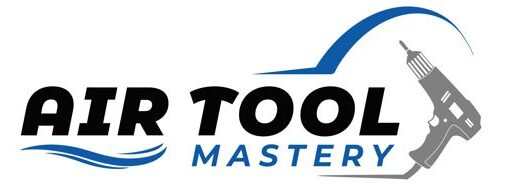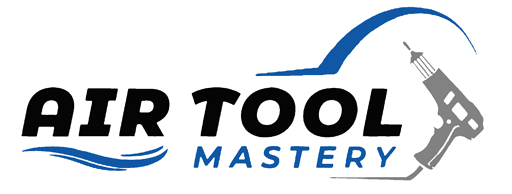Pneumatic foot pedals, often found in industrial machinery, medical devices, and musical instruments, are versatile tools that harness the power of compressed air to perform various functions. These unique devices offer hands-free operation, allowing users to control machines and equipment with their feet.
This not only enhances safety by keeping hands free for other tasks but also increases efficiency. Pneumatic foot pedals are important in industries where precision and control are paramount, playing a crucial role in ensuring smooth, seamless operations.
The Mechanics of Pneumatic Foot Pedals
Pneumatic foot pedals, at their core, operate on the principles of pneumatics, which is the branch of physics centered on the use and properties of gases. When the pedal is depressed, it triggers the release of compressed air within the system. This air travels through tubes, which are directed towards the intended mechanism.
The primary components of a pneumatic foot pedal are the pedal itself, the actuator (which is often a cylinder), the control valve that dictates the flow of the air, and the compressor that initially compresses the air. The compressor, which is powered by an electric motor, takes in air and pressurizes it. This pressurized air is then stored, ready to be released when the foot pedal is activated.
When the foot pedal is pressed, the control valve opens, allowing the pressurized air to flow into the actuator. This sudden influx of air causes the actuator (usually a piston within a cylinder) to move, which in turn performs the desired action, such as moving a mechanical arm or activating a switch.
It’s the precise control over this flow of pressurized air that allows pneumatic foot pedals to offer such a high level of control and responsiveness, making them an essential tool in many industries. The speed and force of the movement can be adjusted by altering the amount of air that is released, providing a level of precision that may not be achievable with other types of actuation methods.
Advantages of Pneumatic Foot Pedals
One of the main advantages of using pneumatic foot pedals is their simplicity. They are relatively easy to install and maintain, and they do not require any complicated wiring or electrical connections. This makes them a cost-effective option for many industries.
Another advantage is their durability and reliability. Pneumatic systems are less prone to wear and tear compared to electrical systems, making them ideal for heavy-duty applications. The use of compressed air also eliminates the risk of electrical shock, making it a safer option for operators.
Pneumatic foot pedals also offer precise and consistent control over the operation of machinery. The amount of force applied by the operator’s foot directly corresponds to the amount of air pressure delivered, allowing for smooth and accurate movements. This level of control is crucial in applications that require precision and accuracy.
Types of Actuation
There are two main types of actuation used in pneumatic foot pedals – direct and indirect. Direct actuation requires the operator to directly apply pressure on the pedal, which then releases a burst of compressed air to operate the equipment. Indirect actuation, on the other hand, uses a separate control valve that is connected to the foot pedal through hoses or tubing.

Each type of actuation has its advantages and is suitable for different applications. Direct actuation is more responsive and allows for quicker operation, while indirect actuation offers greater flexibility and control in the application process.
Maintenance and Care
To ensure optimal performance and longevity of pneumatic foot pedals, proper maintenance and care are essential. Regularly check for any leaks or damages in the hoses or tubing that connects the pedal to the control valve. It is also important to clean and lubricate the pedal regularly to prevent any buildup of dirt or debris.
Types of Pneumatic Foot Pedals
Pneumatic foot pedals come in various types and models, each with unique features designed to cater to specific needs and applications. The two main types are single and double-foot pedals.
Single Pneumatic Foot Pedals are the most common type. They are simple to use, typically featuring one pedal that controls a single operation. Single pedals are often used in applications that require straightforward, repetitive actions, like operating a press or brake.
Double Pneumatic Foot Pedals, on the other hand, are designed with two pedals for controlling two separate operations. This pedal type is commonly used in applications that require more sophisticated control, such as controlling a dual-action machine.

Applications of Pneumatic Foot Pedals
Pneumatic foot pedals have a wide range of applications across various industries. Some common uses include:
- Industrial Machinery: Pneumatic foot pedals are commonly used in industrial machinery, such as presses and brakes, for precise control and operation.
- Medical Equipment: In the medical field, pneumatic foot pedals are often used in surgical equipment for hands-free operation, improving efficiency and reducing the risk of contamination.
- Automotive Industry: Pneumatic foot pedals are also used in the automotive industry for tasks like controlling air tools or operating hydraulic lifts.
- Printing Presses: Printing presses rely on pneumatic foot pedals for smooth and precise control, ensuring high-quality printing.
- Food Processing Equipment: In food processing plants, pneumatic foot pedals are used for tasks like controlling conveyor belts or packaging machines, allowing for efficient and hygienic operation.
- Woodworking Machinery: Woodworking machinery often utilizes pneumatic foot pedals for precise control over cutting and shaping tools.
- Textile Industry: In the textile industry, pneumatic foot pedals are used in sewing machines and other equipment to control needles and other tools.
- Entertainment Industry: Pneumatic foot pedals are also used in the entertainment industry for controlling lighting and sound equipment, as well as special effects.
Outlook on Pneumatic Foot Pedals
As we delve into the current trends in pneumatic foot pedal technology, it’s clear that innovation is at the forefront. Today’s market sees an increasing demand for customization and adaptability, with manufacturers striving to create pedals that can be tailored to specific applications and user requirements. This includes adjustable sensitivity and pressure settings, ergonomic designs for enhanced comfort, and wireless capabilities for increased flexibility and convenience.
One notable trend is the integration of smart features. For instance, some pneumatic foot pedals now come equipped with integrated sensors and IoT capabilities, enabling real-time tracking of pedal usage and operation data. This not only aids in troubleshooting and preventive maintenance but also helps optimize operational efficiency.
Looking ahead, the future of pneumatic foot pedals appears promising. With the ongoing advancements in technology, we can expect to see more intelligent and interconnected devices, further boosting productivity and safety in various industries. There’s also a potential for the development of more sustainable models utilizing eco-friendly materials and energy-efficient mechanisms, aligning with the global push towards sustainability. Indeed, the world of pneumatic foot pedals is evolving, and it’s exciting to anticipate what the future holds.
In Conclusion
Pneumatic foot pedals are an integral part of many industrial and medical applications, providing precise and responsive control for various equipment. Understanding the different types of actuation and proper maintenance can help ensure their efficient operation and longevity. So next time you step on a pedal, remember the power of pneumatic foot pedals! And now that you know all about them, go ahead and impress your friends with your newfound knowledge.

